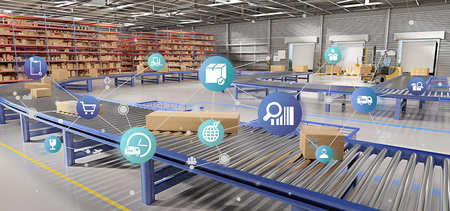
As any bookstore owner who’s heard a customer say, “That’s okay, I’ll order it on Amazon,” when a book is out of stock can tell you - supply chain management can make or break a small business. Supply chain management is the flow of input materials, finished goods, or services, through your business. It’s particularly important for businesses that produce or carry physical inventory.
For a manufacturing company, it could involve the complex balance of ordering raw materials so that they’ll arrive in time for manufacturing to fulfill orders. A restaurant may need to carefully manage produce deliveries to avoid costly spoilage.
For small business owners who haven’t thought much about supply chain management, shipping and delivery issues during the pandemic have probably helped you realize its importance. Here’s are some of the benefits to thinking about it, and tips on how to improve your processes.
Benefits to Thinking About Supply Chain Management
Here are some of the reasons that small business owners should think about supply chain management.
Minimize Costs
One of the biggest benefits that you can realize from effective supply chain management is minimizing costs. By addressing expenses that don’t add value to your product you can increase your profit margins. Two of the biggest areas where supply chain management can help you control costs are transportation and warehousing.
If you fail to include a crucial part with your order, you may have to pay rush shipping so machines don’t sit idle. A supply chain manager also might be able to negotiate better rates or work with carriers to shorten delivery times. Taking advantage of shipping discounts, or bundling orders to lower costs, all impact your bottom line.
Transportation impacts production, but also warehousing. If you order too far in advance, raw materials could sit in a warehouse until they’re needed. You’ll have to pay storage costs.
The same principle applies to inventory that you sell-through. Yes, you need that book on the shelves or in your back room, but not six months before you anticipate demand. Supply chain management often goes hand in hand with effective forecasting.
Increased Profits and Efficiency
Lower costs lead to increased profits when you sell the final item, both when you cut transportation costs but also reduce the time that materials and inventory spend in a warehouse.
When the necessary materials are available as needed, your production process becomes more efficient. You can get orders out the door faster and more efficiently, increasing inventory turnover. Which leads to satisfied customers.
Increased Customer Satisfaction
Remember that example of the customer who just ordered the book from Amazon? Failing to have the right stock on-hand, or fulfilling orders slowly, can cost you customers. On the other hand, quick order fulfillment increases customer satisfaction and loyalty.
Tips to Improve Your Supply Chain Management
Convinced that you should think more about how your business gets the supplies it needs to keep going? Here are two areas where you could easily make improvements.
Learn about Your Suppliers
How well do you know the businesses that supply your plants? If you’ve subcontracted or hired brokers to manage supply, you might not have a good handle on your suppliers and costs might have crept up over time. It’s worth the effort to get to know them.
When you take an inventory of your suppliers, ask the following questions:
-
Where is this supplier located? Is there a company closer that could supply this material? (Transportation savings)
-
What’s the average delivery time from this supplier? Is this hurting my production timelines?
-
Why would I pick this supplier over a different company? (quality, service, discounts, speed of delivery).
-
Does this supplier have the production capacity I need?
-
Could I consolidate suppliers and order the same materials from one company instead of three?
The answers to these questions could help you identify where changes need to be made.
Digitize Your Supply Chain
The days of walking up and down warehouse aisles with a pen, paper, and clipboard are gone. If you’re still manually tracking your supply chain, digitizing could immediately yield rewards.
Investing in software that tracks forecasting, production, and logistics, making connections between them, can show you where you can streamline production. Maybe forecasts are too low, and you’re having to order extra supplies at random times, which drives up shipping costs. Software that compares real-time and historical data helps you plan better. With the click of a button, you can calculate average delivery speeds and identify a supplier who’s lagging behind.
If you manage a lot of SKUs - whether its parts or inventory - or a lot of suppliers, moving to a digital platform could quickly improve your supply chain. And any area where you can improve your business will have an impact on your net profits and efficiency.
